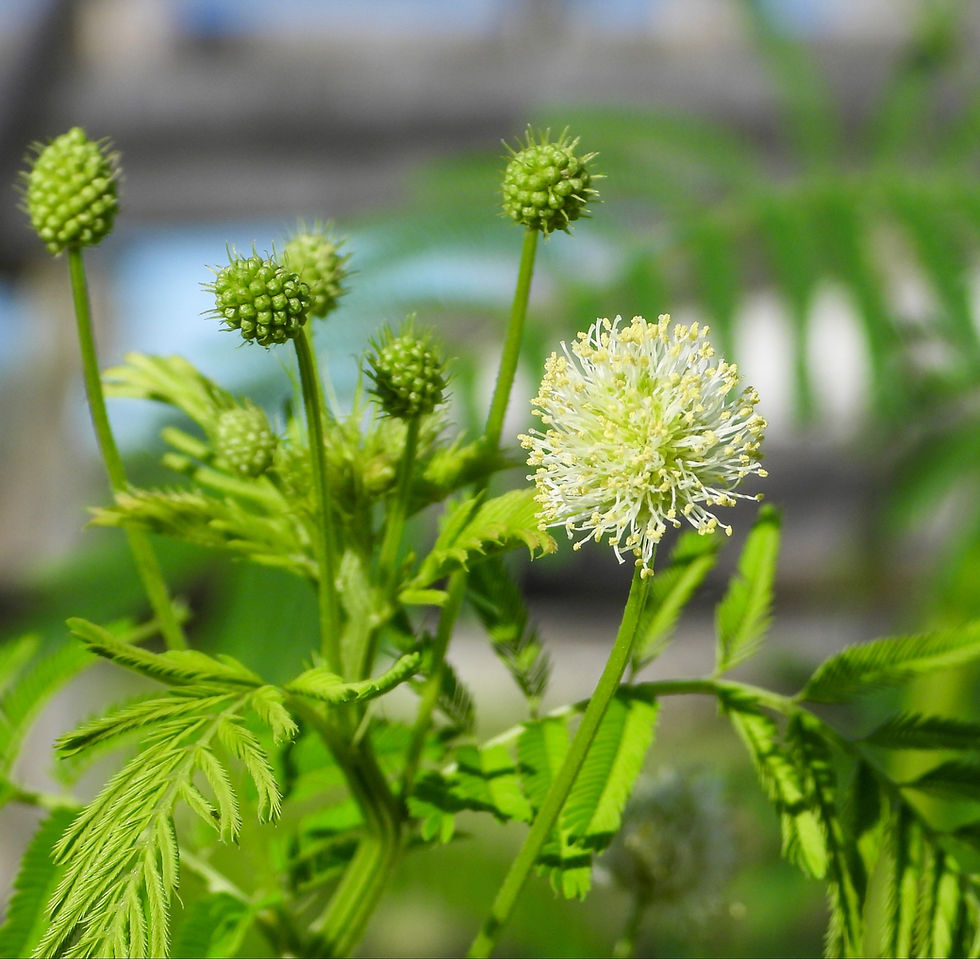Also known as prairie mimosa, Illinois bundleflower is a beneficial plant that features fern-like foliage, fuzzy flowers, and seed pods straight out of Salvador Dali’s sketchbook. It grows 2 -4 feet tall in full sun and adapts to most medium to moist soils. It’s one of two members of the Mimosa genus to occur in prairies, and its membership in the legume family explains its high rate of nitrogen fixation in fertilizing and restoring soils. Its protein content is comparable to soybeans, and some researchers are interested in growing bundleflower as a food crop because it wouldn’t require plowing or fertilizers. It’s a high-protein survival food that’s native to Ohio.
The flowers, leaves, and seed pods of this herbaceous perennial are extremely decorative. From summer to fall, small, spherical flower heads sprout from slender peduncles up to 3 inches long; each round head is completely covered in 25 to 50 florets that bloom gradually on the sphere from bottom to top. Long, white filaments with yellow tips give the spherical heads a silky, tangled appearance. Flattened seed pods that turn from green to leathery brown form a cluster of mesmerizing swirls that eventually split to release shiny, reddish-brown seeds prized by wildlife for winter nutrition. The foliage is composed of bi-pinnately compound leaves, or leaves divided into leaflets that, in turn, are divided into more leaflets. The leaflets fold inward when touched or on sunny days to reduce moisture loss. In the morning and evening, the leaves orient themselves in the direction of the sun. Herbivorous mammals feast on the protein-rich foliage.
Native habitats include open wooded slopes, moist prairies, stream banks, areas along railroads, roadsides, and waste places. Bundleflower prefers open areas with disturbed soils. It’s great for naturalized and prairie plantings, pollinator and wildflower gardens, and revegetation projects. It's a good companion to plants with a rougher structure or larger flowers.
Plant Characteristics:
Grows 2-4’ tall and wide.
Grows in full or part sun.
Prefers average to moist, fertile soils, but adapts readily to other soils except for dense clay.
Greenish-white flowers bloom May-September, followed by leathery clusters of 5-15 seedpods, each about ½” long, containing 2-5 kidney-shaped seeds.
Compound leaves up to 8” long have 6-15 pinnae, each having 20-30 leaflets.
Wildlife Value:
The flower heads are occasionally visited by small bees and flies that seek nectar and pollen. The medium-sized seeds are consumed by various upland gamebirds, including the pheasant, bobwhite quail, and greater prairie chicken.
Medicinal, Edible, and Other Uses:
Pawnees boiled the leaves to produce a wash that relieved itching. Hopi placed seeds in the eye to treat conjunctivitis.
Omaha and Ponca tribes called it rattle plant because children used the dried seed pods as rattles to imitate the dance rituals of adults.
top of page
$4.00Price
Excluding Sales Tax
Out of Stock
bottom of page

